Life on the Rez
Host: Mescalero Apache Cattle Growers, New Mexico, USA
Written by Ruth Wold, Managers Assistant
This is part two in a 5-part series about managing a Native American Reservation ranch. Find part one here.
Well, in all reality, life here on the Rez ranch (Native American Reservation) really isn’t that different than life on any other ranch in the US. As ranch managers, we are here at the pleasure of the tribal administration, just like on other ranches, we are employed by the ranch owners. It just so happens that we have a whole tribe as an employer. We are directly responsible to the tribal president and the tribal council, specifically the Natural Resource committee. While right now we are very content here and feel like we have made a positive change for the Mescalero ranching enterprise, a new administration could decide to change directions and we would be looking for another management job. Since the elections for Tribal president are every other year, this leaves us relying on our faith for any stability. I don’t say that lightly, as I don’t do well with change. I become an emotional mess for those four months of uncertainty. I recover and all is well with the world as I know it, but it doesn’t stop Dusty from wanting to ship me out of the area for a while. We have been here for four years and I am hoping to be here for many more. There have been some learning curves as we have adjusted to life on “The Rez.” We try to take an active role in the community, but we are in the minority. We are the cultural and physical minority. We didn’t know all the customs and tribal beliefs. We still don’t know what all the familial connections are between people. Some of our learning curves went smoothly, others, well, we are still learning!
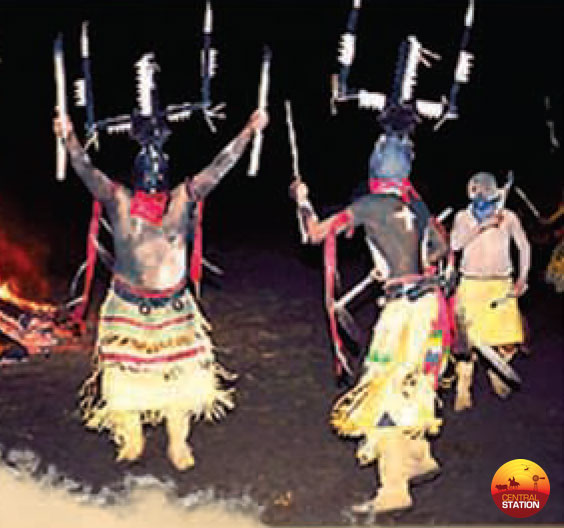 Apache Crown Dancers, taken from the Mescalero Apache website.
Apache Crown Dancers, taken from the Mescalero Apache website.
One major challenge can be the whole idea of “Rez Time.” “Rez Time” is comparable to “Island Time,” where nothing happens in a hurry. Time is relative, if you want something done tomorrow, you should have gotten that ball rolling last week. Plans for changes on the ranch, like building projects, have a process that must be started well in advance. While Rez time can be hard to navigate at first, Dusty tends to be very easy-going and once he figured out not to get in a hurry, things move along just fine. I used to be very planned out. I like having an itinerary when we travel. I am the one who installed calendar apps on our phones and made sure that our schedules sync up and that we both know what is going on. Rez Time was not my favorite thing. It has taken me much longer to adapt and I have been known to run on Rez Time in reverse. I am the one who shows up 45 minutes early because I didn’t want to be late. On the flip side, I am never “on-time”, if I am not early, I am definitely running late. Rez Time works its way into every facet of our lives. We don’t expect meetings to start on time, we have windows of time when we expect people to arrive, (2 hour windows are common). While this is fine on the reservation, the outside world tends to not appreciate Rez Time as much. I tend to get along with those people who run with “-ish time.” 7ish, meaning within 15 minutes around 7, before or after.
Time even comes into play when we plan and schedule for Spring and Fall Works. Like most ranches, we have busy times on the ranch and times that are quieter. Spring and Fall Works are our busiest seasons, my life schedule and calendar is planned around the ranch schedule or the boy’s 4-H animal projects. Our boys raised both show steers and show pigs for competition in the Junior Livestock shows at our county fair.
 Our son, Rafe with his last year’s steer Roaneo at the county fair.
Our son, Rafe with his last year’s steer Roaneo at the county fair.
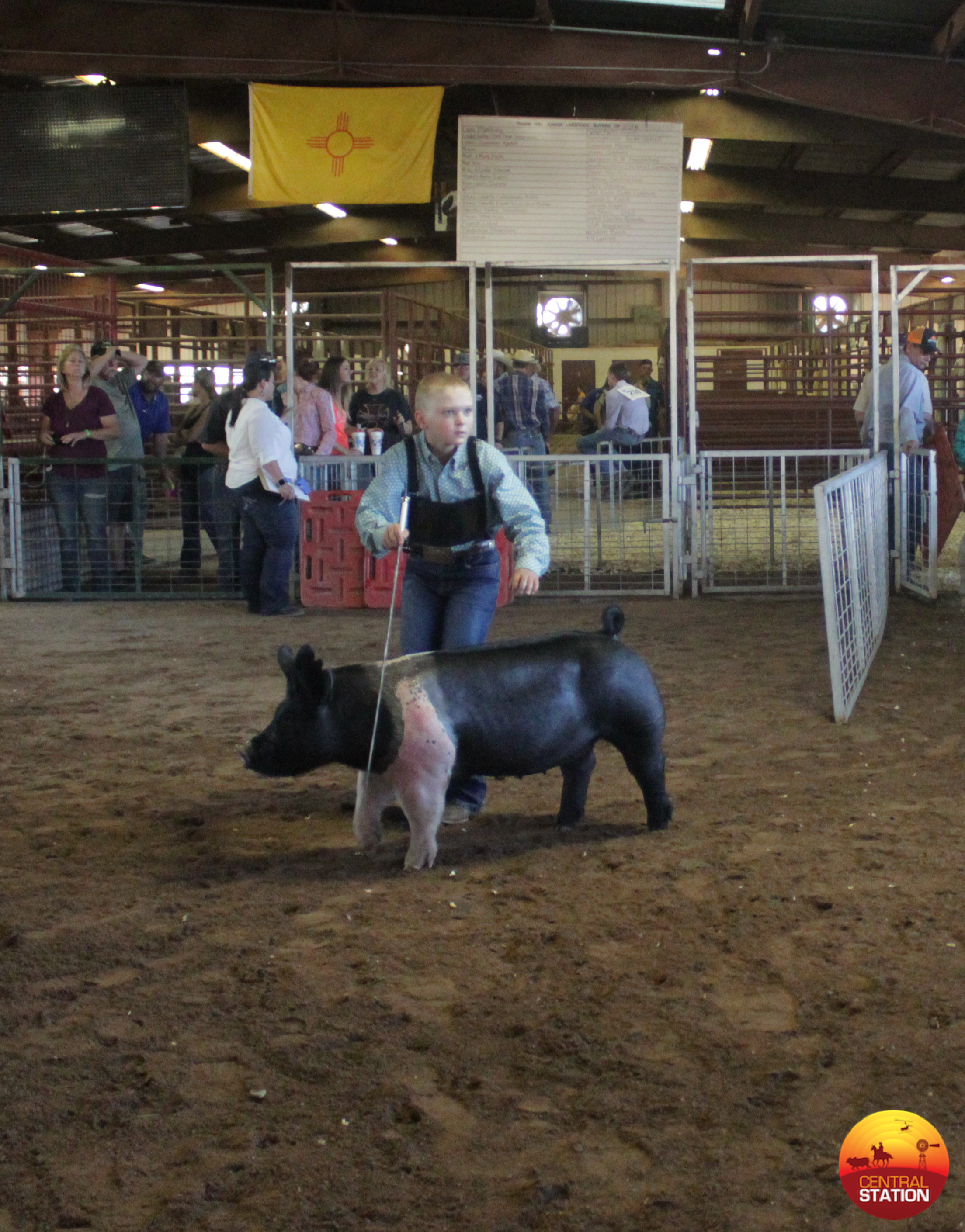 Cal and his Breed winning Hampshire hog, Juicy.
Cal and his Breed winning Hampshire hog, Juicy.
Vacations are taken in the early spring months, March, April, mid-May before our boys purchase their 4-H animals and before we start to gather the cattle in for branding. We might squeeze time away from the ranch after the county fair in late September and after we preg-check and ship calves in October and November. And I say squeeze because once November hits we increase our chances of snowfall, and with snowfall comes feeding the cattle. In our four years here, we have only been snowed in once. It was after Christmas. My parents and brother were visiting and were a big help that week. They helped Dusty by running the feed trucks as Dusty in the backhoe cleared a path in the snow. The rest of our crew lives in town, so they couldn’t get out to help with the feeding for a few days. We got off easy that storm, neighbors further east had feet of snow and many dairies took a huge hit and lost hundreds of calves. We did get a couple of feet of snow, but we didn’t the wind and the accompanying drifts that came with it.
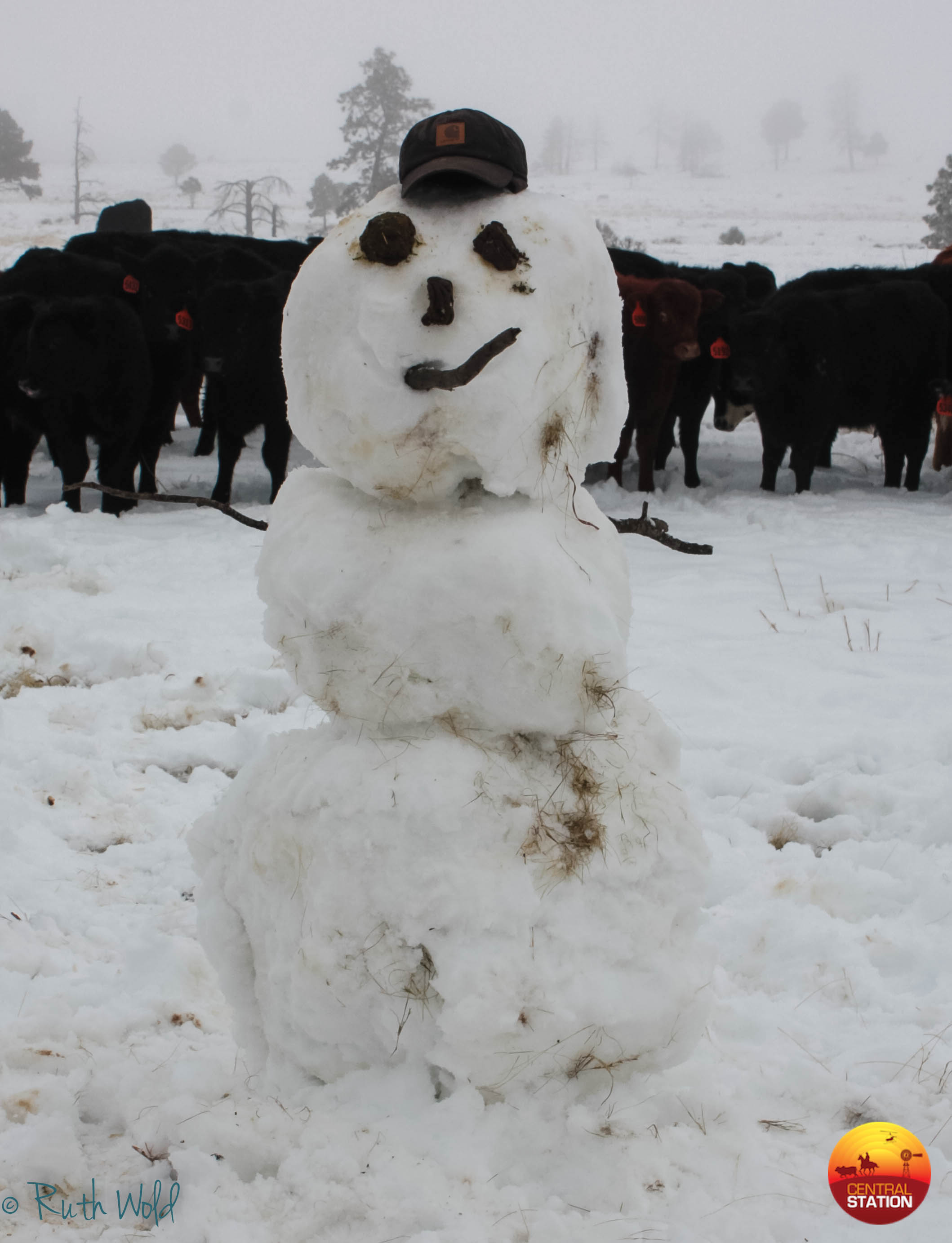 Snowmen come when we feed the cows with the family.
Snowmen come when we feed the cows with the family.
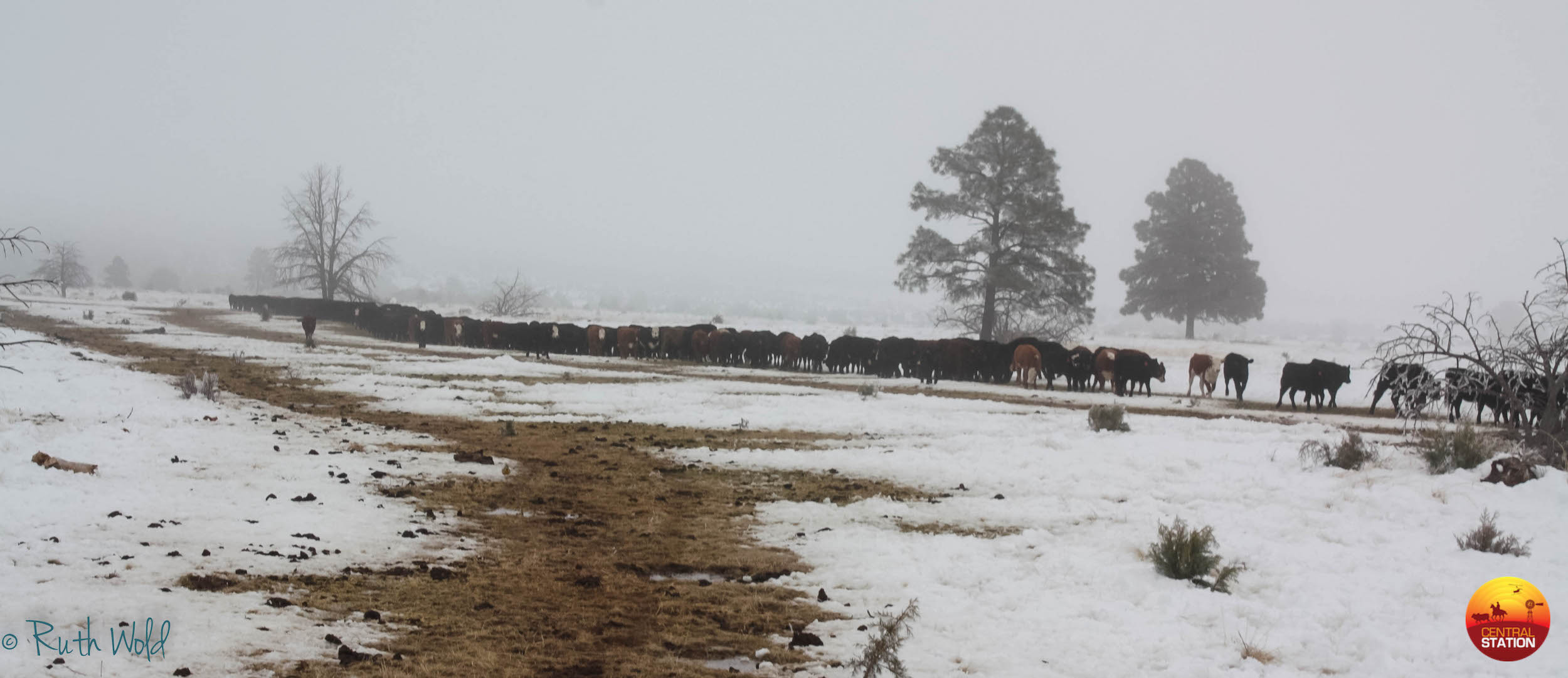 Cows gathering in to feed in between storms.
Cows gathering in to feed in between storms.
Every geographical area has its own colloquialisms. We all have different sayings, ways of speaking. Just like we learned the term Rez time, we also learned other new phrases. If you are on the rez and you might hear that someone got “bumped”. You soon realize that getting bumped is not good, you don’t want to hear that someone or something was bumped. Bumped is getting hit by a vehicle, hit bad enough that it was deadly. People have been bumped, horses are bumped. Bumped is bad. Here is the kicker, bumped isn’t “deadly.” “Deadly” or “det-ly” as it is pronounced, isn’t all that bad. You can have a deadly bad day or eat deadly hot food. “That buck was det-ly big.” You won’t, however, ever hear that he was det-ly bumped. Go figure!?!
One of the easiest things that we learned was that we could have Fry-Bread. Most anyone who has lived for a length of time in the US southwest has gotten a taste of Fry-Bread, or they should have. Not trying it is a tragedy. Fry-Bread was developed by Native women and is not on a low-carb diet of any kind. White flour is used to make a dough and then formed into balls, flattened out and dropped into hot grease. The dough is cooked until it begins to puff up and then brown lightly, taken out and let cool on the quickly grease-soaked paper towels. It is then used for everything as a bun for hamburgers, filled with apples or other fruit, or eaten with powdered sugar and honey. It also forms the base for a very regional treat, Indian Tacos. Indian Tacos are Fry-Bread heaped with pinto beans and/or ground beef, lettuce, tomatoes, cheese and onions, if desired. They are once again, not diet friendly. Delicious, but not helpful if you are cutting calories. Most of the young women of the tribe know how to make Fry-Bread early on. I must not have that gene, I have tried to learn.The last time I tried, I started out making the dough balls, was moved on to the flipping chore and then asked finally to add the lettuce and cheese for others. I haven’t tried again. It was just sad. Besides, I am afraid that knowing how to make Fry-Bread would be very bad for my jeans ever fitting again.
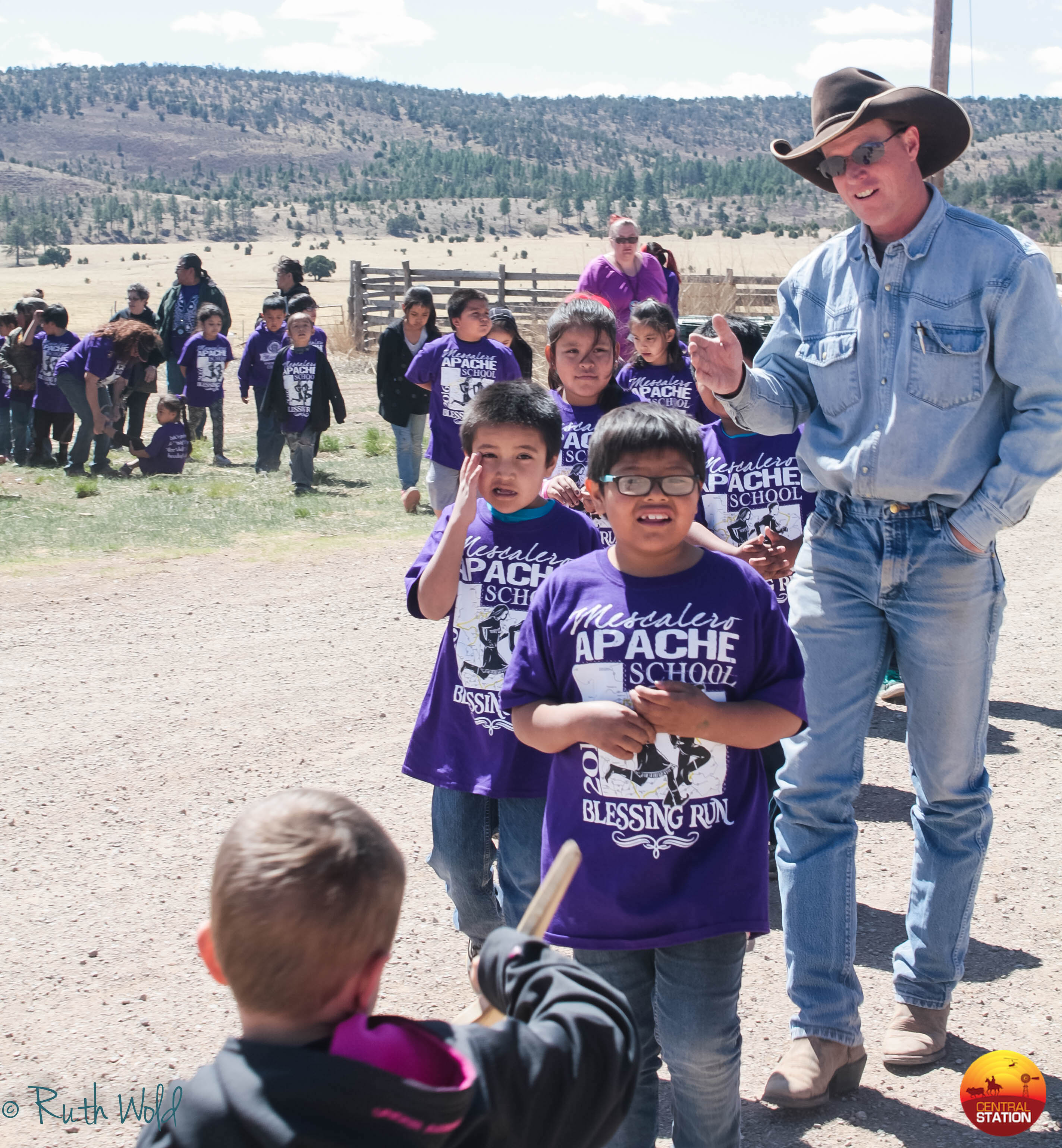 Dusty leading local kids on a tour of Cow Camp 1.
Dusty leading local kids on a tour of Cow Camp 1.
